charts

I will get back on the UFR horse soon, promise, but every January/February I like to grab all of the year's play-by-play data, painstakingly repair the damaged bits, and recreate the information that (other) internet nerds used to. This all goes into those stat boxes I make for HTTV, which I've started working on in earnest the last few weeks.
While I'm at it I thought it might be useful to put together a companion piece to discuss the statistical profile of Michigan and other teams of interest. I also figured I could make it a reference point for those boxes in the future, and also explain some of my decisions.
Feedback is most welcome; I took Stats 404 in college and have been trying to figure out the rest as I go.
Resources:
- College Football Data (CFBD). A good starting point. Free. You can download tons of raw stuff from them, including play-by-play and drive data. A lot of it's in admittedly rough shape, but they've done the hard part of scouring NCAA box scores.
- Football Outsiders. Most stuff free. Home of FEI and its NFL equivalent, DVOA. Fremeau's Efficiency Index is based on drive efficiency.
- 247 Database. Compare against rosters to see who's coming and going.
- Pro Football Focus. Their grading is suspect but they have all kinds of useful snap data.
- Bill Connelly. SP+ rankings remain the most predictive of all fancystats.
Also I did a data dump on Tempo.
[Hit THE JUMP for the deep nerding.]

Last Friday I asked for football questions and got a lot. Roughly these fell into two categories: What’s going on with the college football landscape, and what does Michigan look like next year. So I’ll break those into two posts. If your question didn’t get answered, it’s because the person who asked something similar is better looking.
Why can’t we get a transfer?
Mercury Hayes asked:
It is clear that Mel Tucker and MSU is going to target the transfer portal heavily to shore up their roster each year. With a team as strong as Michigan, why aren't we seeing more of this?
Michigan is notoriously hard to transfer into. In deep history this wasn’t a case, since smaller colleges used to do the talent collection work that big high school programs do today. But today, Michigan treats transfers athletes no differently than other transfer students, and like many elite academic institutions, are stingy with the credits.
Why isn’t this a problem with freshmen? While there are a lot of kids Michigan won’t even offer once they see their transcripts, given enough headway, the football program can get most of the freshmen they recruit into Michigan the normal way, and they get a hard number of quasi-waivers for the rest. With a transfer, our academic experts have to work with what they’ve got, and in most cases it won’t be enough. Even if they can get them in, they can’t get enough of their classes to match up with classes that Michigan offers, so the guy has to be good with essentially starting his career over again.
Thus Michigan has been limited to grad transfers, guys who don’t mind virtually starting from scratch, and Stanford’s roster. Here’s the breakdown of Michigan’s 20 transfers since 1990:
- Grads (11): Jake Rudock, Wayne Lyons, Blake O’Neill, John O’Korn, Casey Hughes, Mike Danna, Willie Allen, Jordan Whittley, Daylen Baldwin, Alan Bowman, and Victor Oluwatimi
- Freshmen (5): Jonathan Goodwin, Spencer Brinton, Steven Threet, Ty Isaac, Andrew Gentry
- Mid-Career (2): Grant Mason, Shea Patterson
- Jucos (2): Russell Shaw and Austin Panter
Grant Mason came from Stanford. That leaves just a mid-1990s Juco, another Juco who played 8-on-8 football in high school and became a doctor, and Shea Patterson who broke the mold. Did Shea graduate?
I assume, but don’t know, that other football schools have much cozier relationships with admissions. That part is never going to change, but Michigan’s undergraduate admissions could ease off quite a bit and still be elite. Northwestern took six transfers last year. It’s really just us and Stanford who can’t seem to cut a deal between the jocks and the admissions pencilnecks.
On the flipside, Michigan is a top-15 recruiting school that has to go well outside of its footprint to keep up that pace, and regularly leaves 4-stars on the bench, so they're bound to give up more transfers than most. The first year that players could free transfer (because of COVID) was alarming, dwarfing even the Great Rich Rod Flight.
Dismissed players not included. Click here if you want to see this chart as an interactive viz.)
The thick yellow bars above were the glory days when grad transfers were free, which was ideal for Michigan’s particular needs and valuable graduate degrees. It also helped in recruiting; part of the pitch in those years was “commit to us and worst-case scenario you’ve got that degree with 2 years to play somewhere.”
The chart above isn’t that alarming, however, because few of Michigan’s recent out-transfers have left us wondering what could have been. Most of the guys who’ve left the program under the free transfer rules were looking for playing time, IE they weren’t playing here. If anything, it’s made it easier, and less skeezy, to oversign and trim the roster.
It’s going to lead to faster roster turnover for everybody. For Michigan, it means they can recruit larger freshman classes, refreshing mostly scholarship positions from guys who weren’t going to play into more guys who might someday. That’s also true for schools like Ohio State, Alabama, and Georgia, which have an easier time recruiting, and have greater access to mid-career up-transfers, but that’s not a big change. What’s different is they’ll be replacing their 3rd year guys who aren’t playing with someone else’s 3rd year guys, while Michigan’s rosters will get even more freshman-heavy.
Realistically, where the transfer market changes football the most is it raises the quality of the mid and lower-mid range programs who can fill major roster holes before it gets to true freshman Ray Vinopal. The schools it helps most are the mid-tier programs like Indiana, Illinois, or Michigan State that can protect their stars from getting poached, but often develop big roster holes. Being able to fill those with Michigan and Florida leftovers raises the floor for those teams; Kenneth Walker III-type impact players are probably going to be super-rare.
My biggest concern is the opportunity for tampering, because it’s not like the NCAA is going to regulate that better than they (don’t) do anything else. Any time an NCAA rule is getting widely flouted, it’s going to disadvantage Michigan, because Michigan’s self-image is wrapped up in that being the case. The alarming thing about Xavier Worthy going to Texas wasn’t just losing a star freshman before he played, but how blatantly Sarkisian was communicating with him, and they just got away with it. Apparently that’s been happening a lot, which isn’t surprising, since the transfer rules came about in the first place because that was happening with great frequency back in the day.
What’s the answer? I’ve heard of some labor markets using a document signed by both parties that stipulates enforceable conditions for an exchange of services, but I don’t think the NCAA wants to go there.
[After THE JUMP: NIL, another big chart, and the return of The Clans]
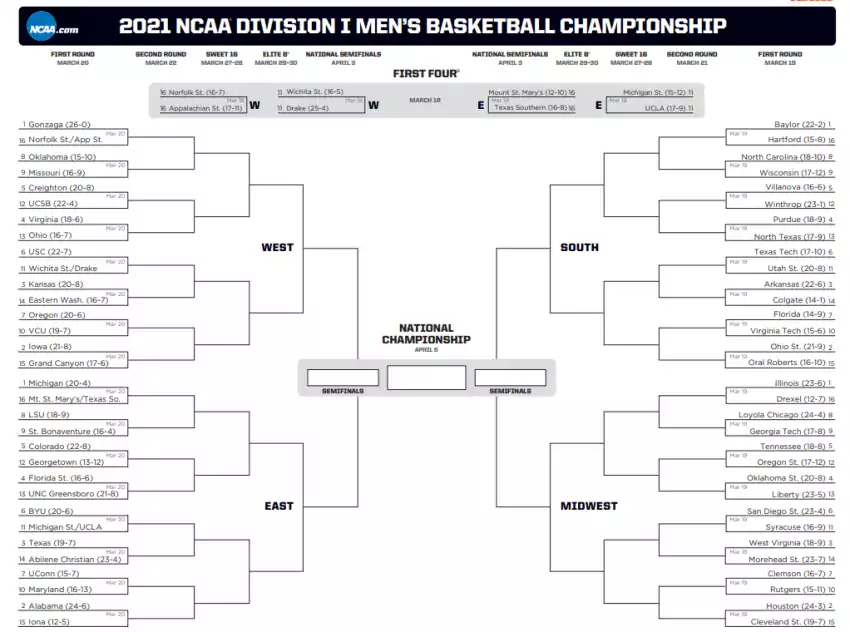
I didn’t get to make the bracket widget last year so this year I went a little overboard: For those of you who still have Excel, you can now make your very own Sethchart! Put in the name of the team you want to look at, and it’ll show you the lineups and injuries and player data including the shot charts.
Google Sheets has a hard time converting the pretty charts so you really need Excel for it, sorry. If one of you has the capability to convert these better please let me know and we'll make that available to the gentry.
I suggest taking some time to familiarize yourself the shooting charts, which show shot type and volume (specifically shot equivalents per 30 minutes) because that will show you quickly where a team’s scoring comes from and what kind of player each guy is. Usage (%Poss) also lets you know who’s driving the offense. PRPG! boxes are color shaded—they’re not perfect but they’re decent at picking out which players are problems for the opponent and which are problems for the team.
I also made the traditional Bracket Assist tool so you can compare two teams at a glance. I highly recommend making your own copy so you can click around at your leisure.
Most of the data are from Kenpom and Torvik, with the injuries from a combination of lists, Kenpom data, and googling that resulted in ad-blasted local papers behind a paywall. Distance factor was calculated by putting the schools' addresses into Google Maps (I have a tool). The shot charts are data from Hoop-Math.
After THE JUMP: ten basketball tools I use
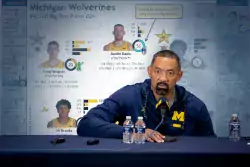
Most of you intuit most of what's on there, but since they're really for people like me who need to see it to understand it, I figured we could use a tutorial to refer back to later.
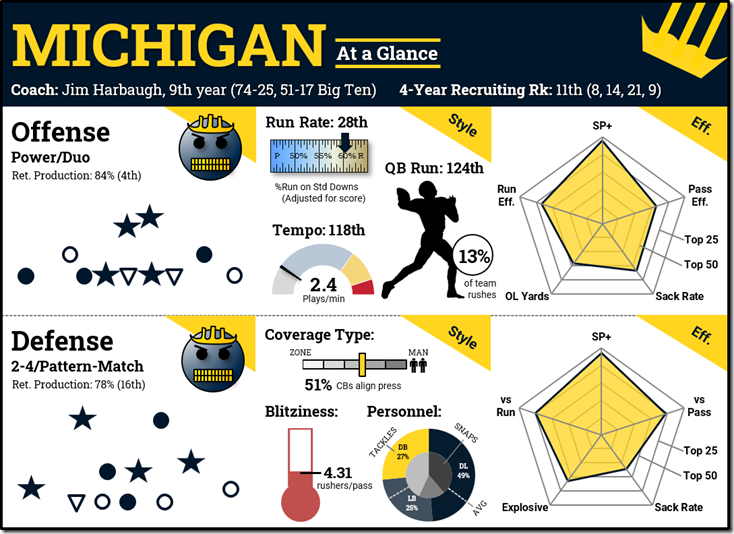
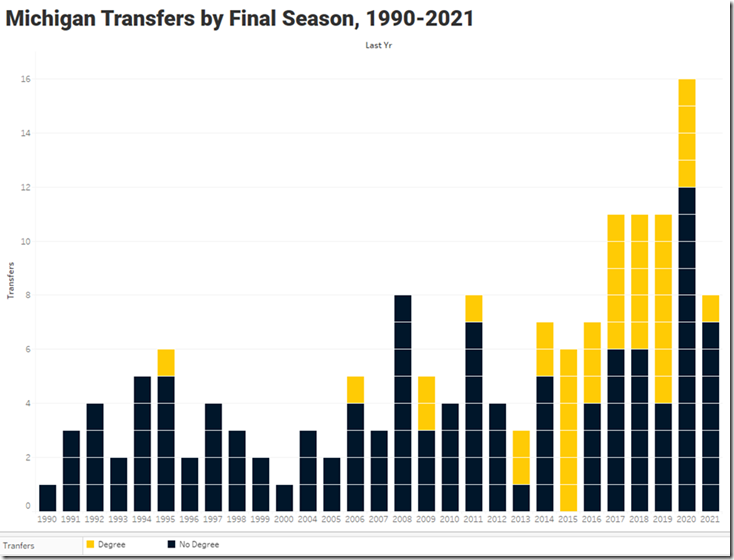
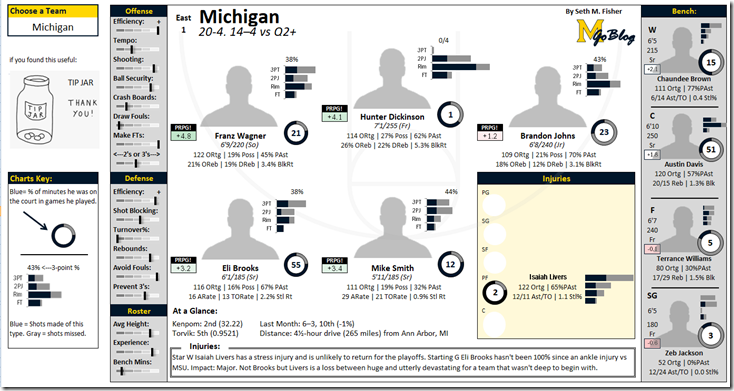
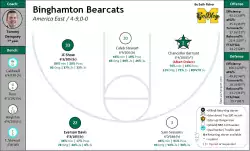
28